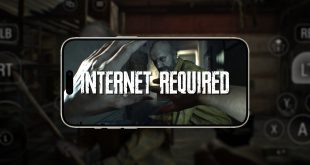For many people, one of the most important purchasing decisions when buying a new tablet is the quality of the screen. Displaymate have published an indepth analysis of all the major tablet devices, with some fantastic details on the quality of the panels.
The iPad 2 scores very well, as we would expect. Apple are well known for using some of the finest quality panels on both their tablet and laptop computers. Dr. Raymond M. Soneira said “We’ll begin with the iPad because it’s the standard that all other Tablets are compared to… The iPad 2 has an excellent display, virtually identical in performance to the impressive iPhone 4 Retina Display, with a somewhat higher pixel resolution but a much lower pixel density of 132 ppi due to its much larger screen size. The iPad 2 IPS LCD display is fairly well calibrated and delivers bright images with excellent contrast, reasonably accurate colors and very good Viewing Angle performance with small color shifts but a large decrease in Brightness, which is the case even for the best LCDs. A major shortcoming is a reduced Color Gamut, but the iPad 2 improves on-screen image color saturation by steepening its intensity scale.”

The Amazon Kindle Fire however didn't fare so well, with some major criticism mentioned in regards to display quality. He said “Amazon advertises that the Kindle Fire has an “anti-reflective treatment” but our lab tests found it to have among the highest reflectance levels we have ever measured – it’s 70 percent higher than the iPad 2, and more than double the reflectance of the Nook Tablet. That may not matter much if you are reading in bed but it’s likely to be a significant factor indoors and especially outdoors. It’s also a surprising piece of puffery for Amazon – who’s generally a very straight shooter…
Another big disappointment for the Kindle Fire is the Gallery, the native application that is used for viewing photos and images. First, the gray-scale is way off, and overdriven so hard that significant picture detail will be lost with bright images. It’s very similar to what happens with an over-exposed photograph – all of the bright content appears washed out or even lost all together – see the screen shots in Figure 4 below. Like the Nook Tablet, the Kindle Fire uses a version of Android for its OS, but the User Interface on the Kindle Fire is much closer to vanilla Android – and most of the time it’s much nicer than the Nook’s own UI. But the Kindle Fire still carries a major flaw in Android that I pointed out almost 2 years ago with the Nexus One, and which Google acknowledged. The Gallery provides only 16-bit color – that’s 65 thousand colors not the “16 million colors” that Amazon advertises. It also produces noticeable steps (called false contours) in some images. While the display hardware can do 24-bit color it doesn’t show up on-screen in the Gallery viewer due to the software design. It’s about time that Amazon and Google fix this… Fortunately, the Web browser on the Kindle Fire does support full 24-bit color for web images.”
So can this be fixed? It doesn't bode well for Amazon. Dr. Raymond M. Soneira added “It has two major flaws, and only one of them is fixable with a software update. Another display related issue is that the chunky menus in the Kindle Fire Gallery eat up 100 pixels of the screen, so photos only get 500 of the screen’s 600 vertical pixels. If you display a standard 4:3 digital camera photo it only fills 54 percent of the screen and a 16:9 photograph only fills 72 percent of the screen. To fix this the UI needs to be updated so that the menus disappear after a few seconds the way they do in other parts of the Kindle Fire UI.”
Kitguru says: Not a great analysis for Amazon, who are already planning a larger, 9.7 inch version of their full colour tablet for release in Q2 2012. Hopefully they can use a higher quality screen for the more expensive unit.
 KitGuru KitGuru.net – Tech News | Hardware News | Hardware Reviews | IOS | Mobile | Gaming | Graphics Cards
KitGuru KitGuru.net – Tech News | Hardware News | Hardware Reviews | IOS | Mobile | Gaming | Graphics Cards



Its not a shock really, its why Apple cost so much, its quality all over the product. Kindle fire screen is ok, ive seen it, but compared to ipad 2 or motorola xoom, it sucks.
its all about the bargain price point. lets get real.